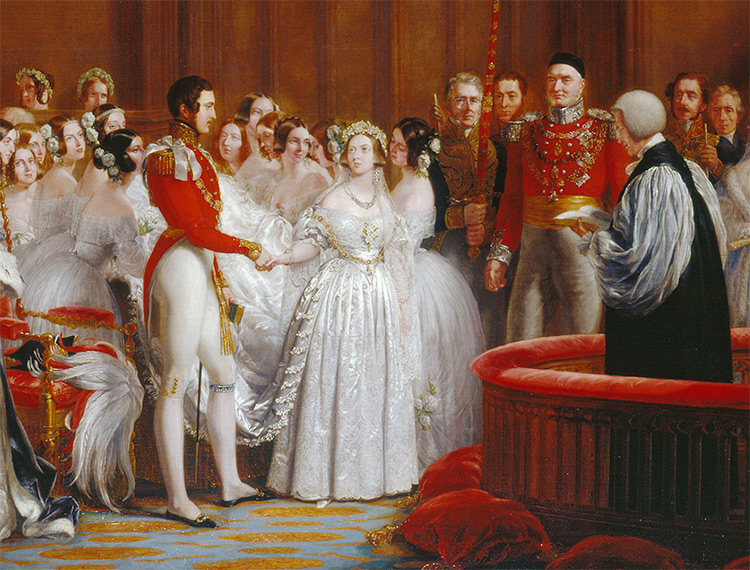
source: wikipedia.org
On the morning of May 24, 1819 at the Kensington Palace, Princess Victoria (full name Alexandrina Victoria) was born to Prince Edward, Duke of Kent and Strathearn, and his wife Princess Victoria of Saxe-Coburg-Saalfeld. When she was eight months old her father died of pneumonia. Upon his and her uncles’ deaths, she became the heir. Her mother was very protective over her, but still played an influential part in Victoria’s life. She was educated by a governess at the Royal Palace and had a great gift for drawing and painting. Victoria was also very passionate about journal writing.
At the age of 18, Victoria became queen after King William IV died in June of 1837, though her coronation did not take place until June 28, 1838. There were over 400,000 people there for the coronation. Victoria had originally been a popular monarch, until a mishap with Lady Flora Hastings, one of her mother’s ladies-in-waiting. Lord Melbourne, who had been the prime minister at the time, helped to teach her the ways of being a monarch. Along with that, he was her political advisor and close confidant.
In 1840, Victoria married her first cousin, Prince Albert of Saxe-Coburg and Gotha. In the beginning, the public did not like him or warm up to him because he was German. He was excluded from political positions until later he was made Prince Consort. Victoria, however, was very devoted to and in love with him; she did nothing without his approval. Together the couple had nine children. His death in 1861 to typhoid fever caused Victoria to fall into seclusion for more than 25 years to come. She did not come out into the public until the Golden Jubilee of 1887, which was also her 50th year of being queen.
Canada, Australia, part of the Caribbean, India, and different locations of Africa were taken over by England during the time of Victoria’s reign. In 1878, she became the Empress of India. The British empire was so large at the time that Victoria ruled over a quarter of the world’s population; about 450 million people.
With the exception of an uprising in Ireland during 1848, the Boer Wars in Africa occurring during 1881 and 1899-1902, and the Indian Rebellion in 1857, her reign was free of war. Victoria’s children married into various royal European families, including those from Russia, Romania, Sweden, Germany, Norway, Greece, Belgium, and Denmark. Because of Victoria and Albert’s children marrying into these royal families, it helped England stay out of war.
Victoria was known to have very conservative views. She hated Prime minister William Gladstone, a liberal, but was luckily able to find a way to work with him. Prime Minister Benjamin Disraeli was a conservative, and Victoria liked him much more than William Gladstone.
During Victoria’s annual stay at the Osborne House on the Isle of Wight for Christmas, her health began to decline, which made her unable to return to London.On January 22, 1901 at the age of eighty-one, Victoria died on the Isle of Wight. Her eldest son, Edward VII, was her successor. He eventually died in 1910 due to bronchitis from smoking too many cigarettes and having numerous heart attacks. Victoria’s reign was a time of great change in cultures, industry, science, communications, and much more. She is England’s second longest monarch (Queen Elizabeth I coming in first) and the second longest female monarch to ever rule in history.



